Guard Duty
Lifeguards vs. Patrons
Lifeguards protect, Patrons sabotage. Only one side will rule the pool.
Artwork generated by AI for Guard Duty.
Watch the Trailer
A short teaser of Guard Duty gameplay and its tense social dynamics.
About the Game
A thrilling social deduction game where teamwork and cunning decide the fate of the pool! Players are secretly divided into Lifeguards and Patrons, each with unique abilities and objectives.
Inspiration
Guard Duty: Lifeguards vs. Patrons was inspired by the classic social deduction game Werewolf and the chaotic energy of a busy summer pool. It combines hidden roles and day-night phases from Werewolf with the unique tension of pool operations, creating an experience where deception and strategy meet the playful setting of lifeguards protecting a public pool from saboteurs.
Three Game Pillars
What
Guard Duty is a hidden-role, social deduction game of lifeguards protecting a pool from saboteurs.
How
Players use unique abilities during tense night phases and strategic discussions during the day to root out or conceal the Patrons.
Why
To create an exciting, replayable experience full of suspense, teamwork, and dramatic reveals that mirrors the chaos of a crowded summer pool.
Backstory
At Splash Funzone, the most popular outdoor swimming pool in the city, summer is at its peak. The sun beats down over the slimy, sunscreen contaminated water, as families gather for their day trip barbecues to escape the heat while their children splash and squeal in the pools. But behind the cheerful splashes, a sinister undercurrent flows
The pool is turning into the center of a bitter dispute: a secret group of Patrons, frustrated by rising admission costs and poor maintenance, have banded together and are scheming against the lifeguards. By night, these saboteurs plan to force the pool's closure through calculated acts of mischief and chaos: dye bombs, drain clogs, and damage to the pool.
The lifeguards, the city's first line of defense for of fun and safety, are sworn to protect the pool at all costs. They form a union of specialized roles, each using their unique skills to detect, protect, and neutralize threats. Under the cover of darkness, both sides play a dangerous game of cat and mouse, each plotting to achieve their goals before dawn reveals the victors.
However, nobody knows who to trust. Hidden identities and secret agendas mean friends can turn to enemies in a blink of an eye, and a single mistake could spell disaster for the pool, or save it for another summer day.

Artwork by Kylie
Gallery
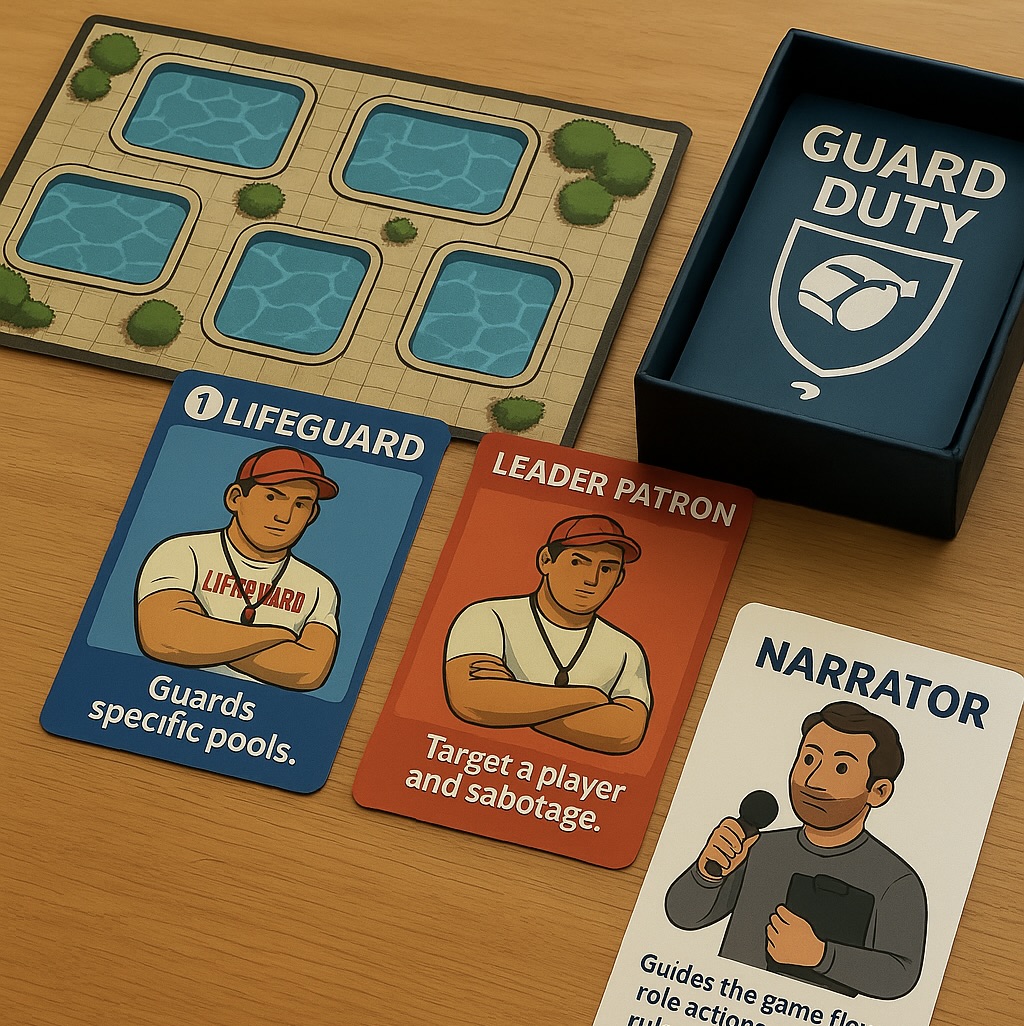
Full Game Setup
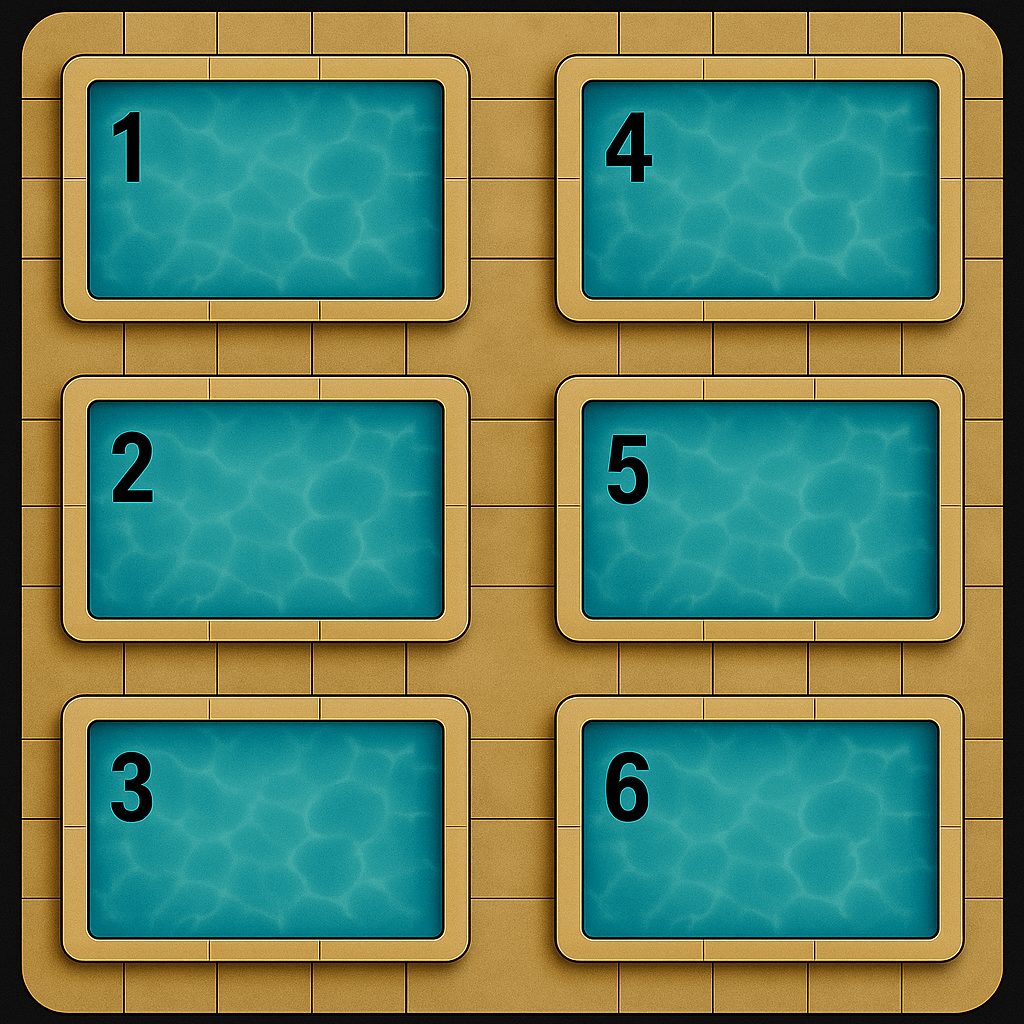
Game Board
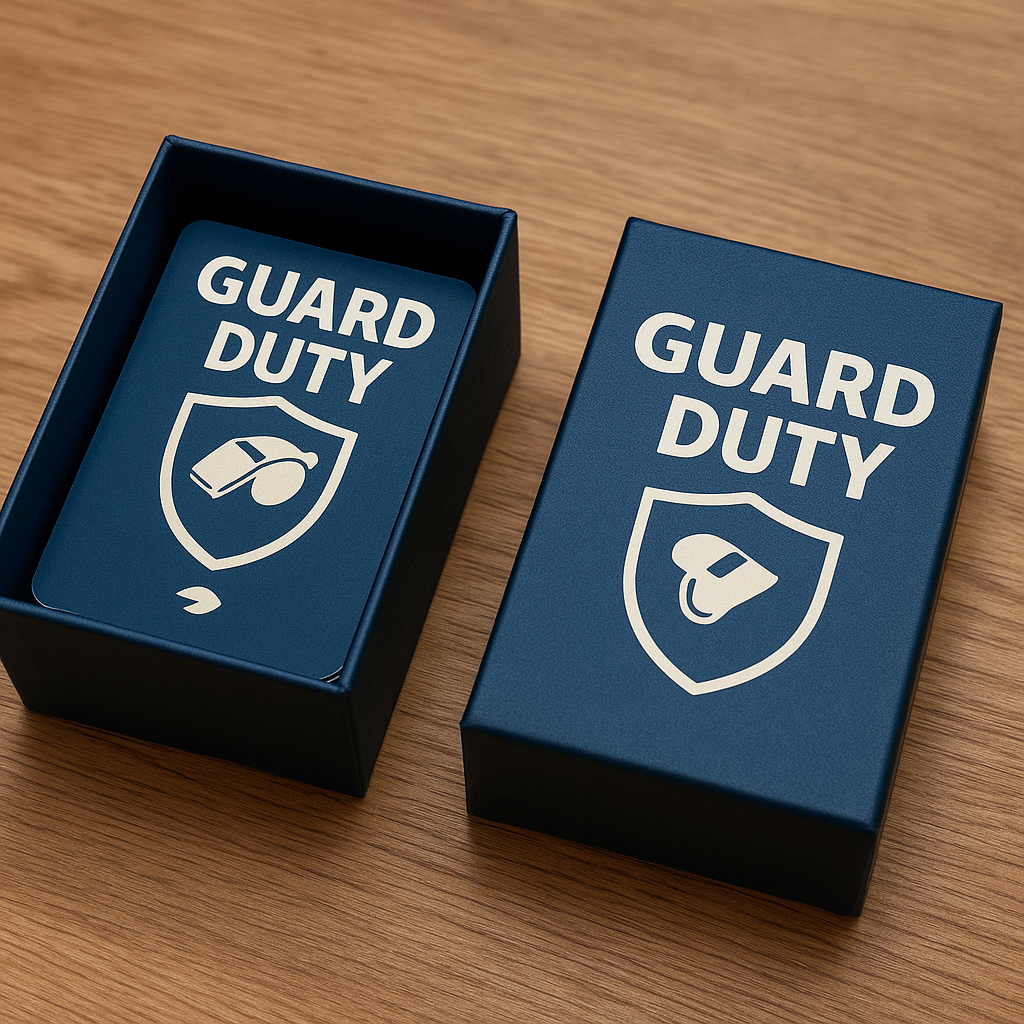
Game Box
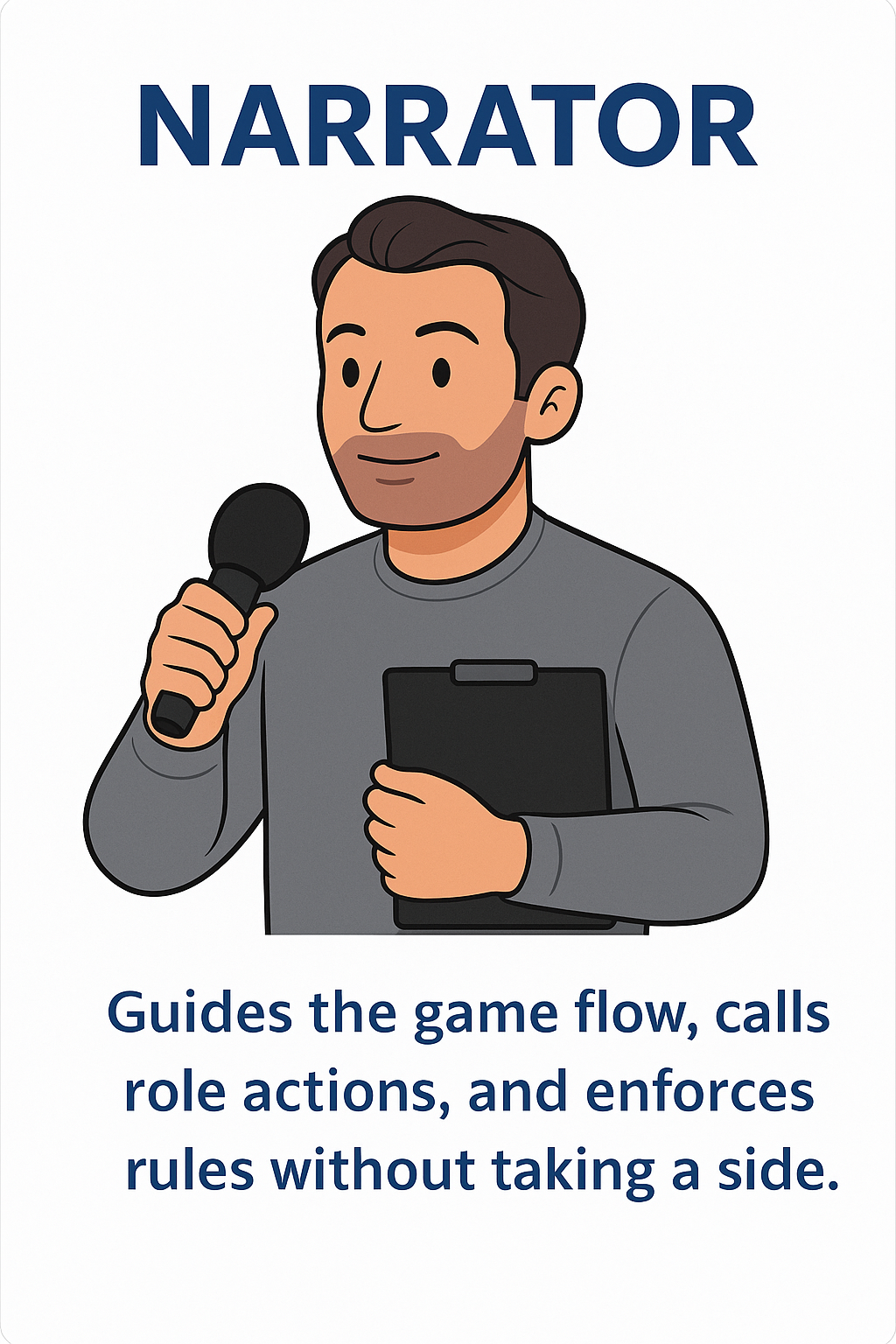

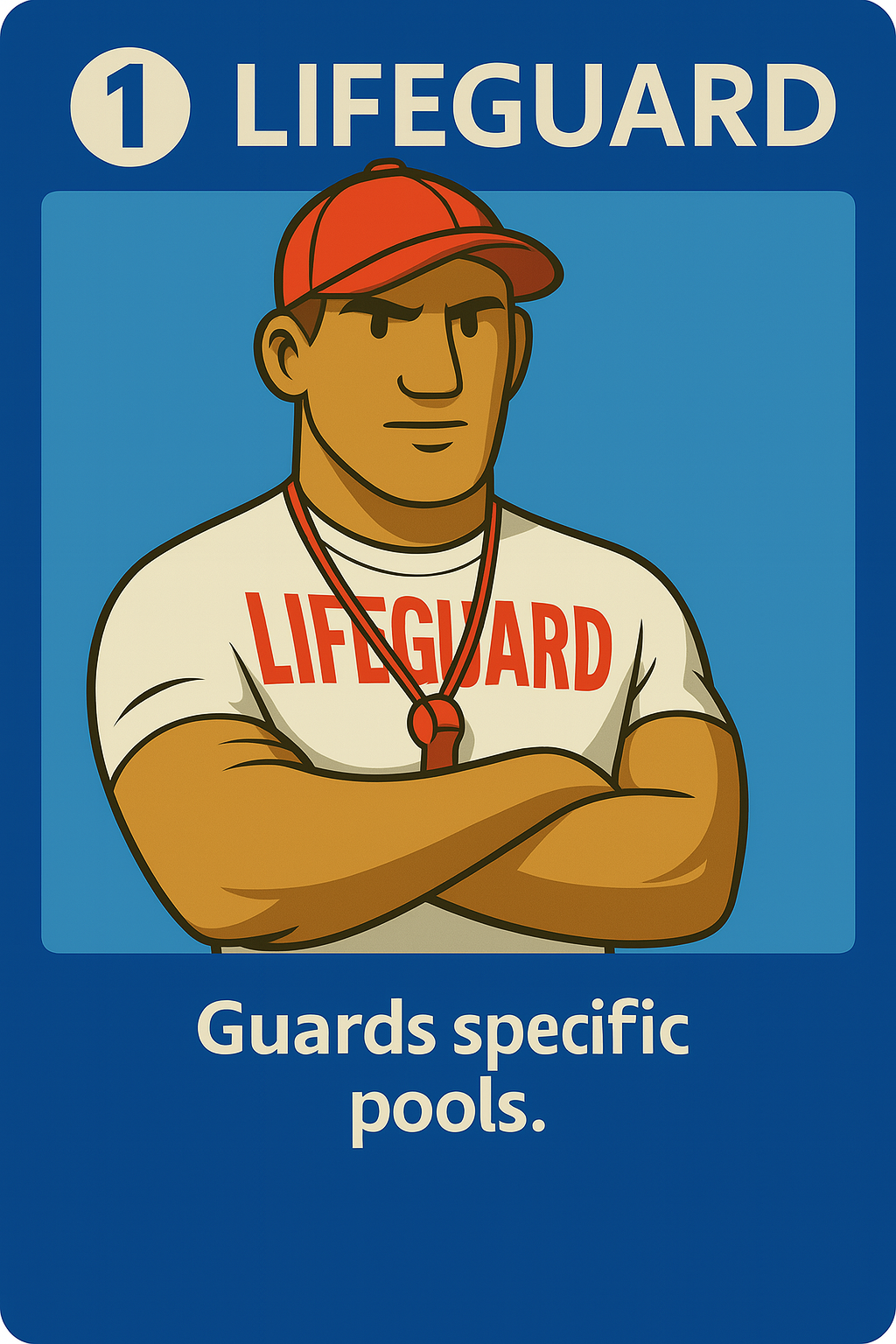


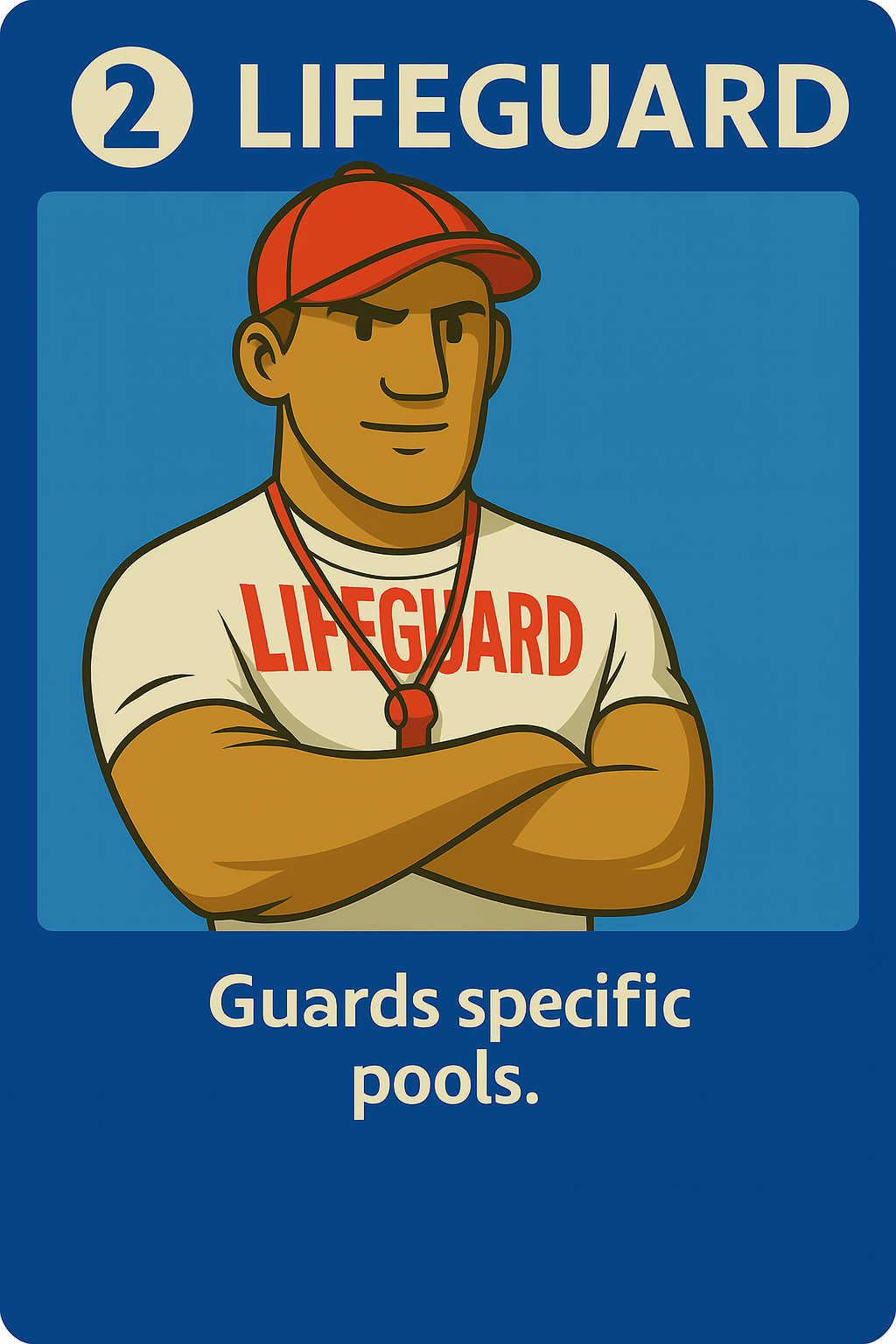
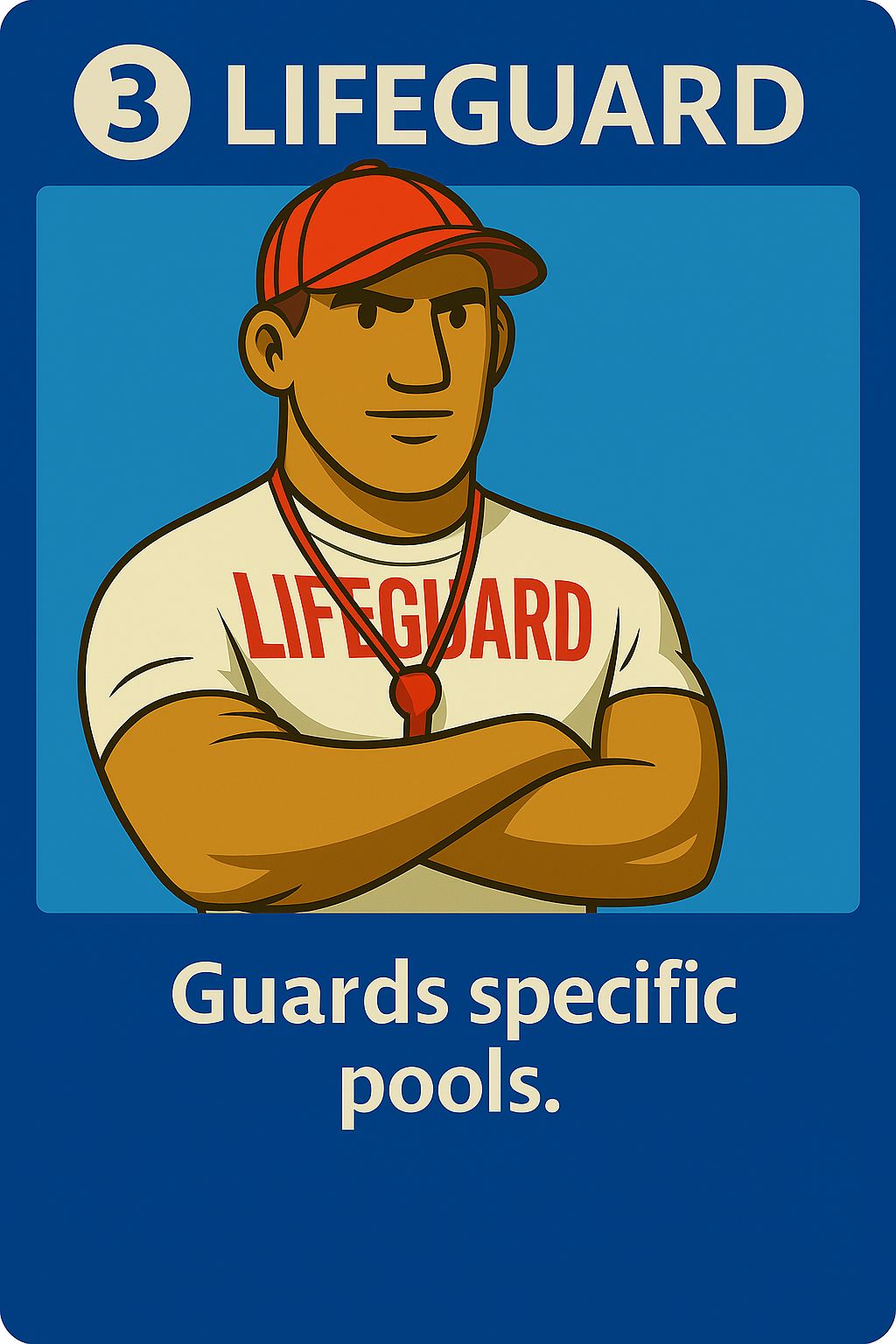

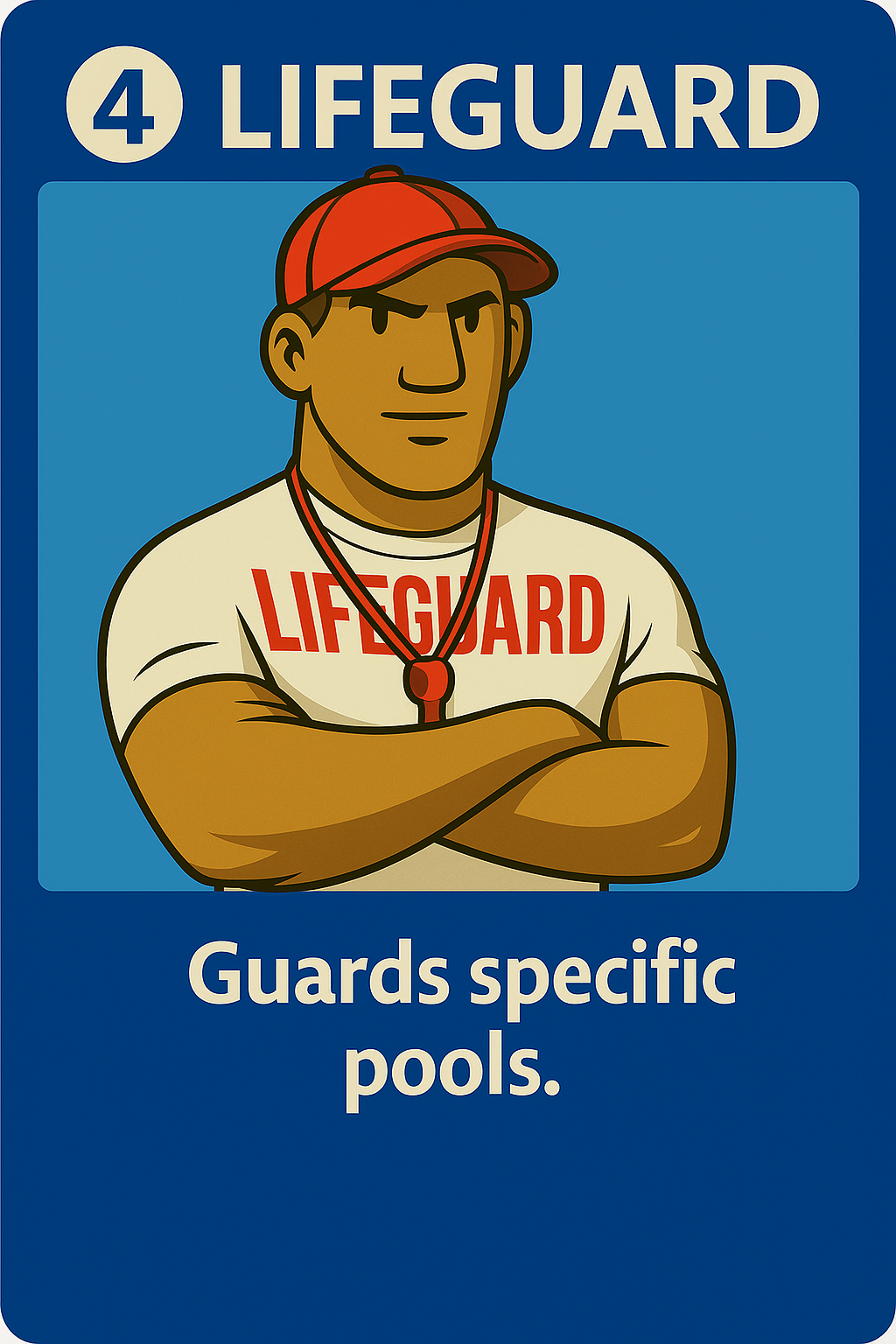

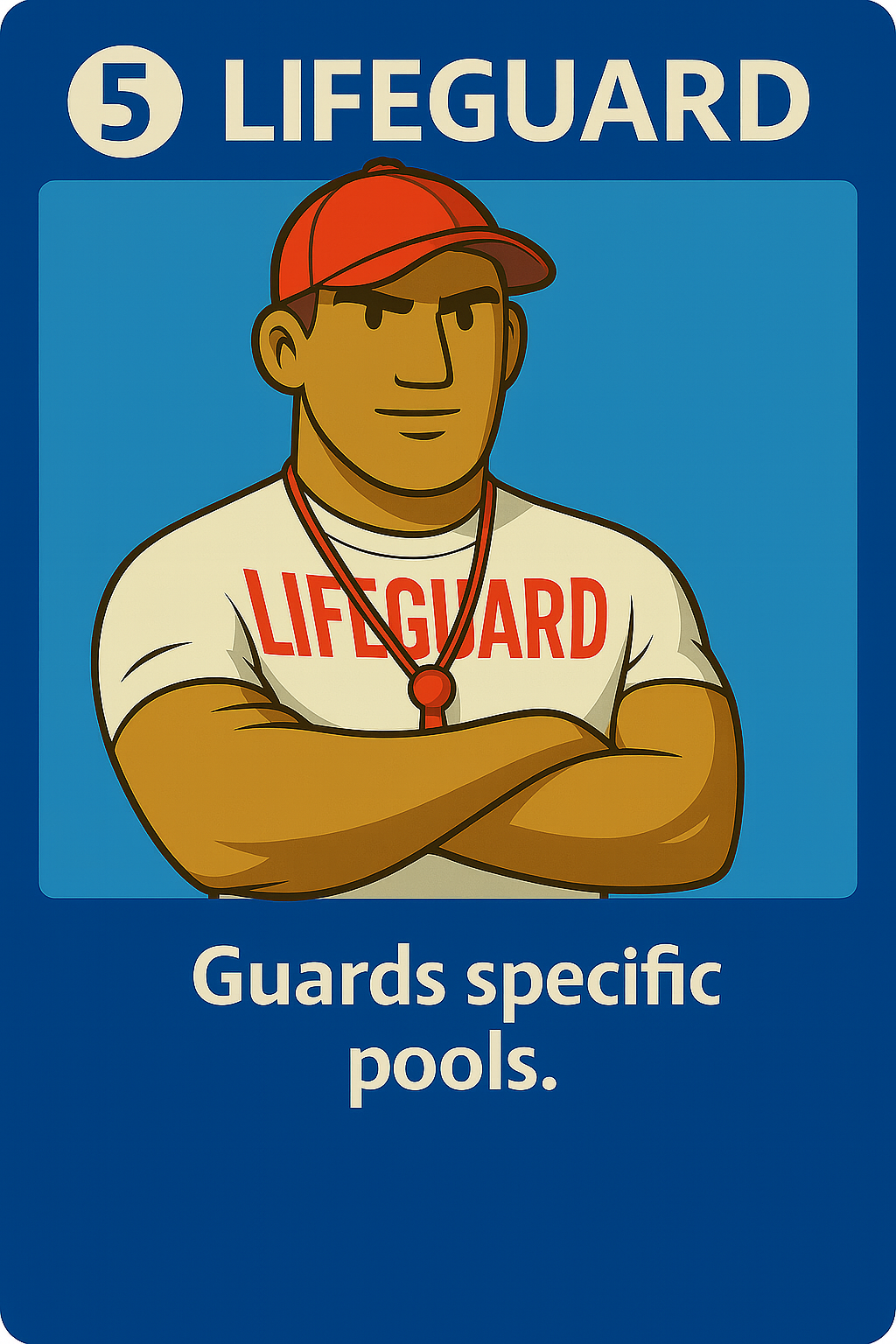

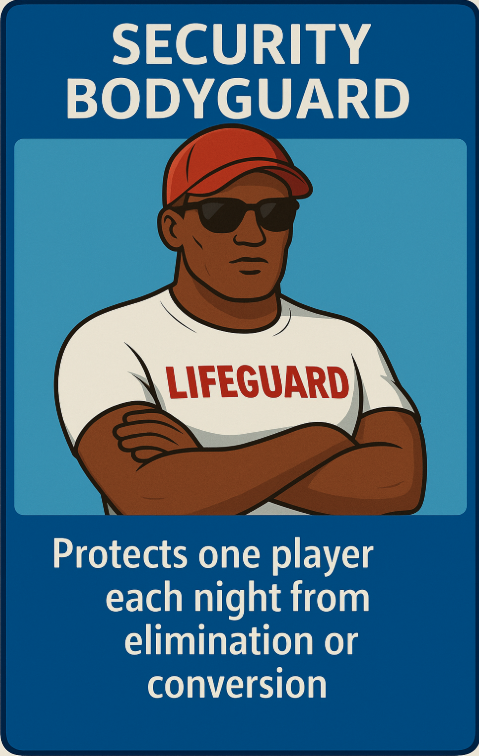

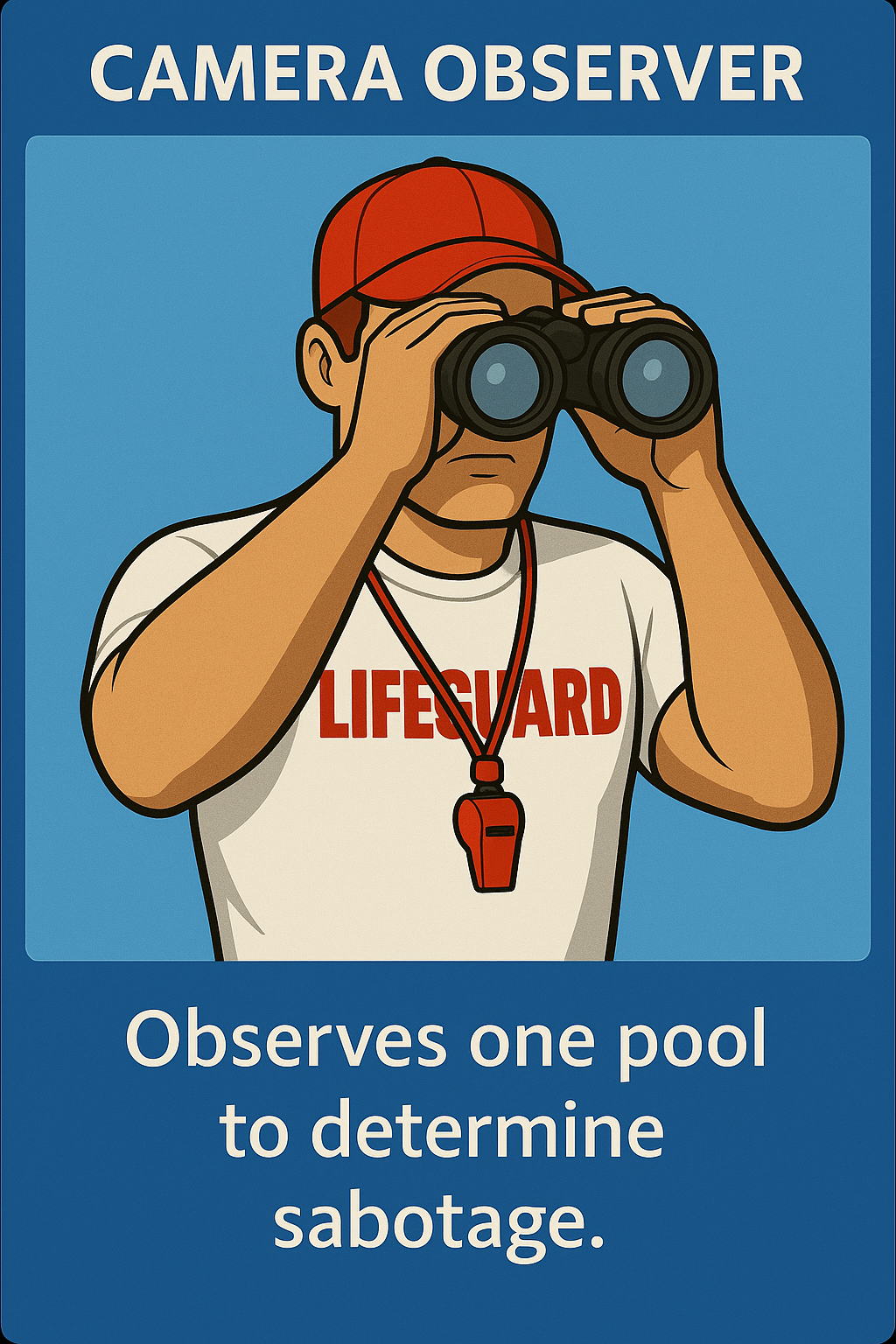

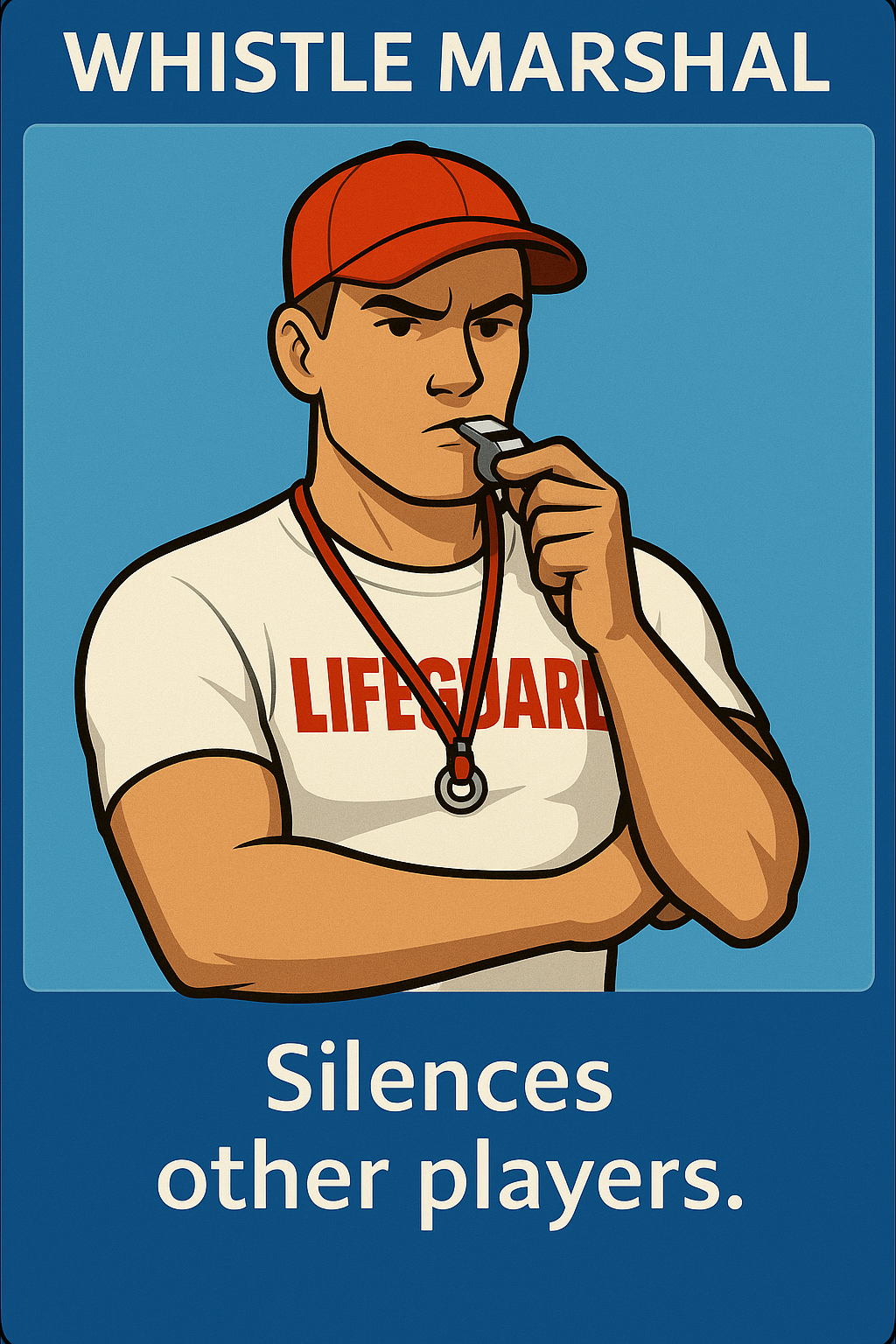

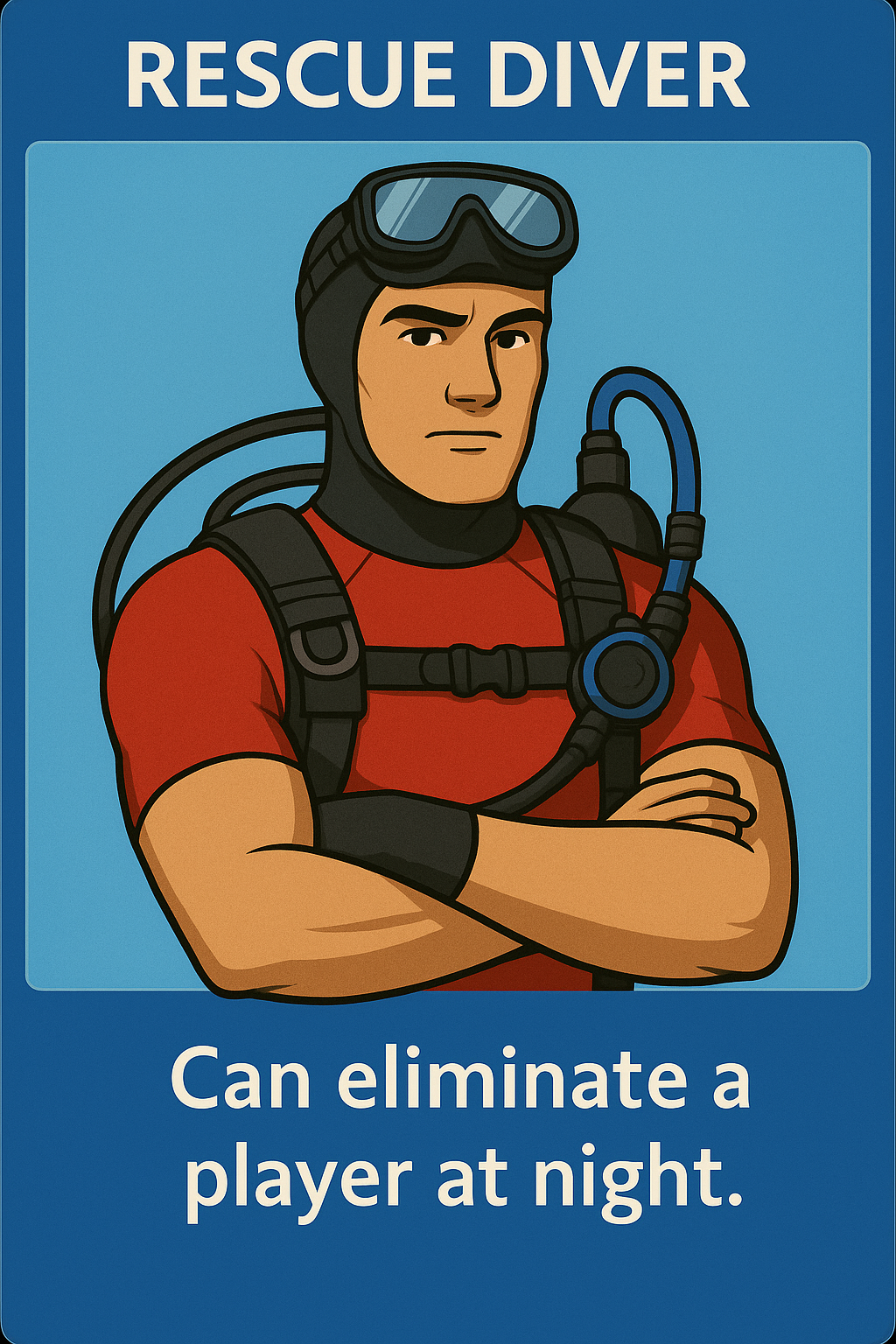



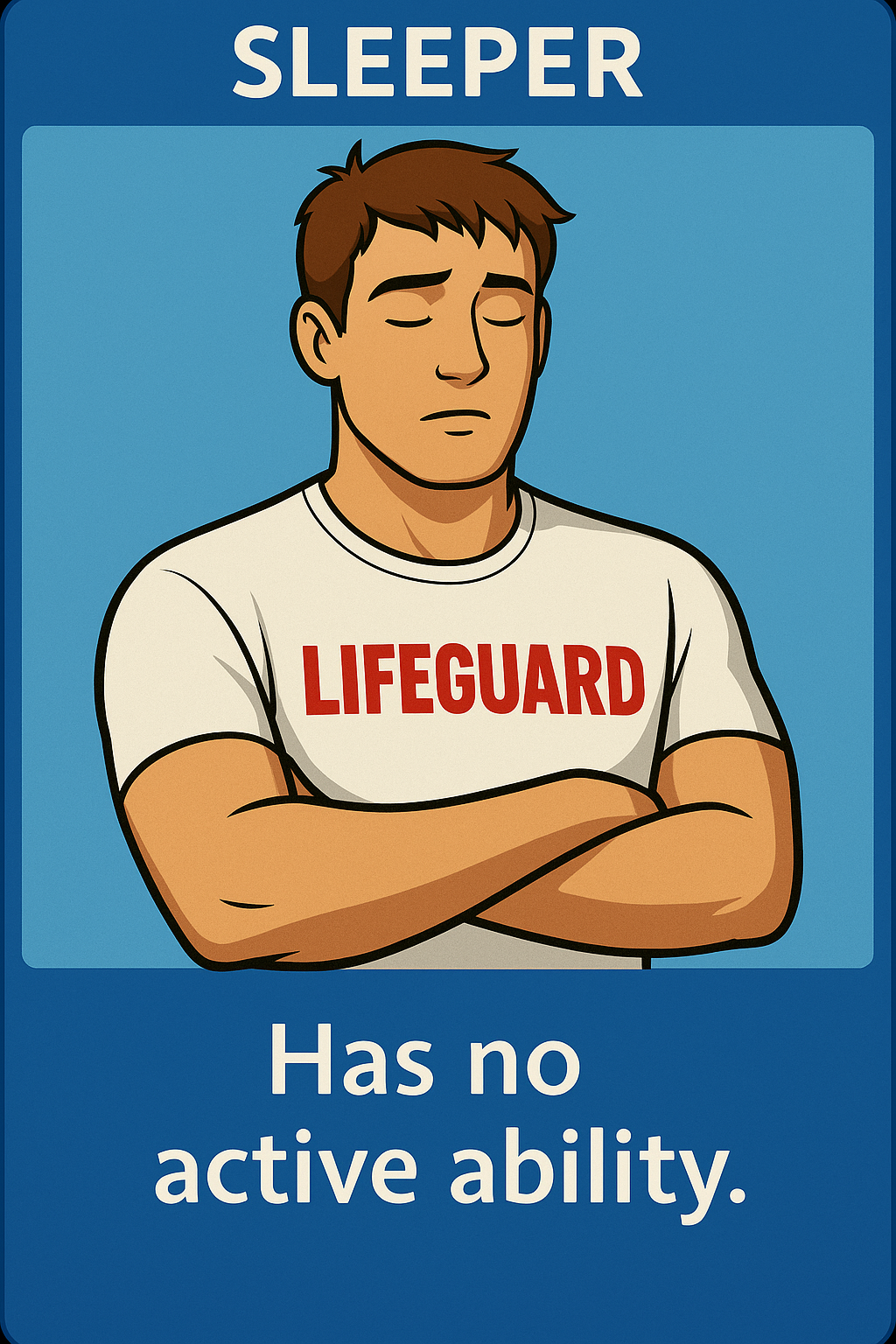

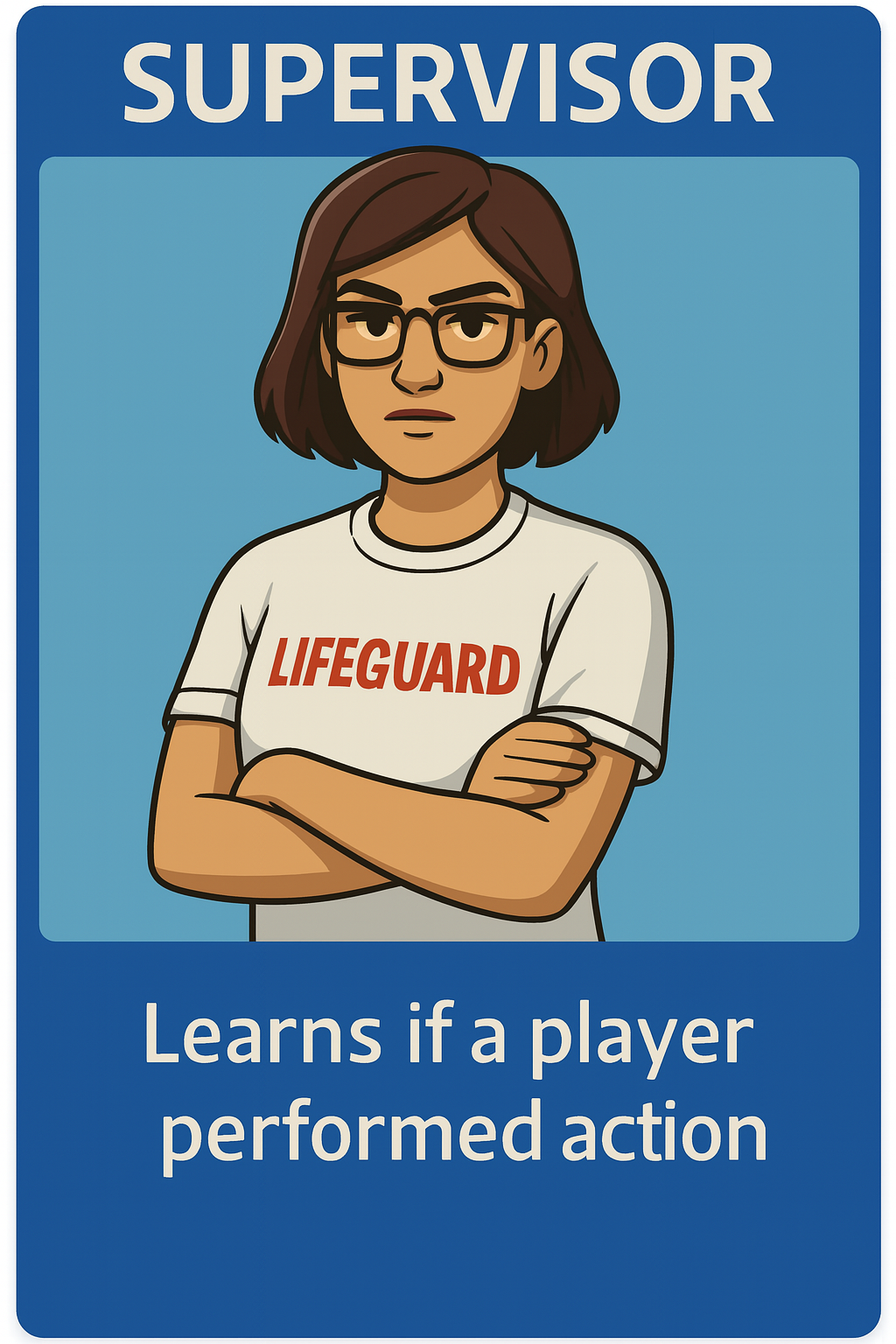









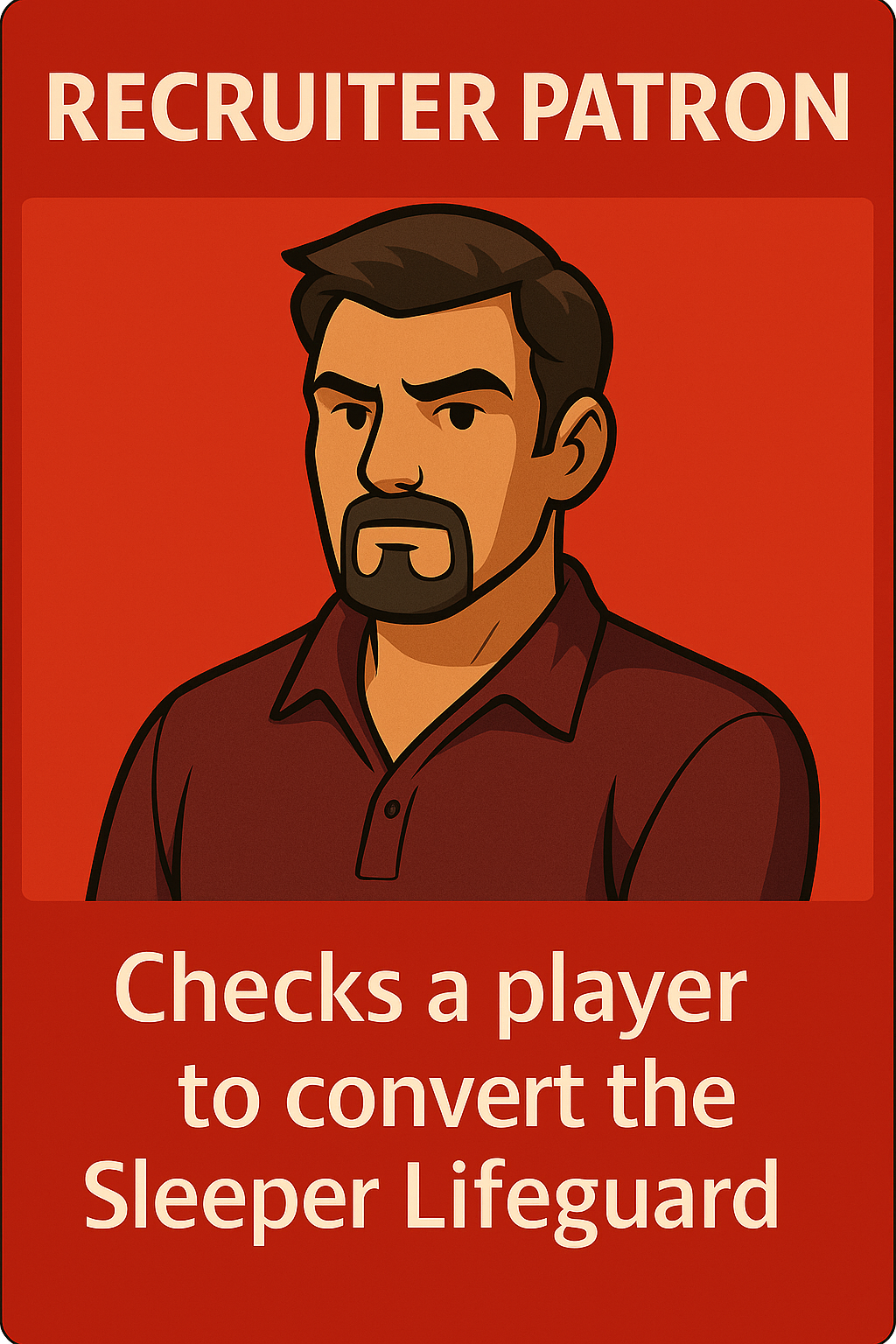











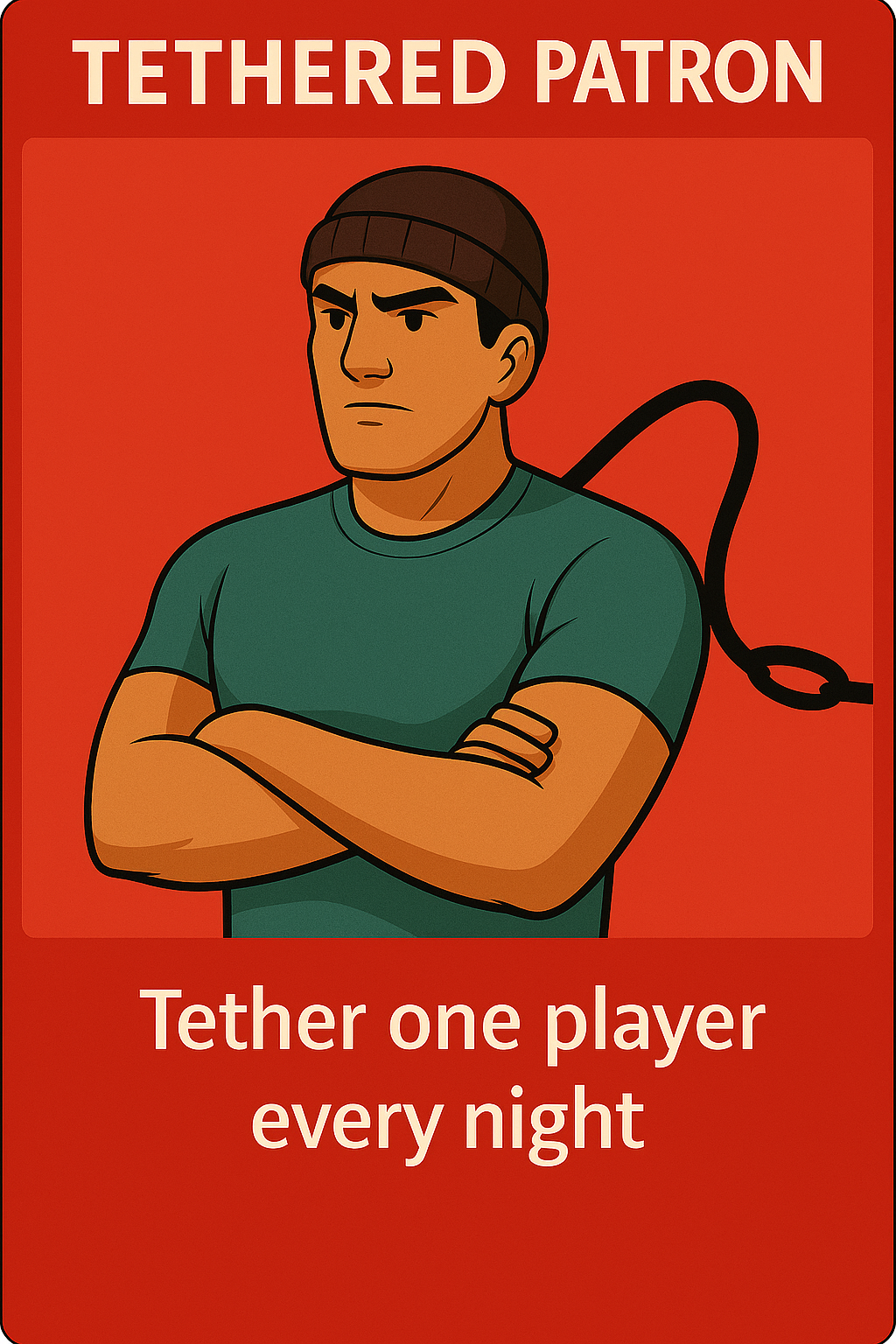

Artwork generated by AI for Guard Duty.
Meet the Roles
Discover the unique characters and their special abilities
Narrator

Narrator
Guides the game flow, calls role actions, and enforces rules without taking a side.
Lifeguard Team

Security
Learns a player's role each night

Camera Observer
Observes one pool each night to determine sabotage

Whistle Marshal
Silences one player per night

Rescue Diver
Eliminate a player during the night, one-time use

Supervisor
Learns if a player performed an action

Security Bodyguard
Protects one player each night

Doctor
Protects one player each night

Regular Lifeguards
Guard pools each night from sabotage

Sleeper Lifeguard
No active ability but knows their role
Patron Team

Leader Patron
Chooses pools to sabotage and targets to eliminate

Disruptor Patron
Mutes a player for the next day

Chameleon Patron
Appears as Lifeguard when investigated

Recruiter Patron
Can convert the Sleeper Lifeguard

Tethered Patron
Each night chooses one player to tether

Regular Patrons
Collaborate with Leader to sabotage pools
Roles scale with player count for balanced gameplay!
How to Play
Night Phase
All players close their eyes. The narrator calls on roles to act in order, maintaining secrecy.
Results Phase
The narrator reveals outcomes like eliminations and muted players to all participants.
Day Phase
Players discuss, vote, and potentially eliminate a suspect through democratic process.
Pool Guarding System
The game features more pools than guards (e.g., 4 pools, 3 guards). Lifeguards must strategically choose which pools to guard each night, while Patrons attempt to sabotage unguarded pools.
Key: If the chosen sabotage pool is unguarded, sabotage succeeds and unlocks special abilities!
Night Phase
Action Order:
Patron Actions (1-5)
Lifeguard Actions (6-13)
Notes:
- Patrons wake together; keep eyes open until all Patron roles finish.
- Lifeguards wake one at a time in Narrator-assigned order.
- Recommended gestures:
- Point to choose a player.
- Patrons vote by displaying pool numbers with fingers; Leader Patron decide final choice.
- Rescue Diver: Narrator shows an X if ability is locked.
- Supervisor: thumbs up for action, thumbs down for none.
- Security: thumbs up for Lifeguard team, thumbs down for Patron team.
- Camera Observer: thumbs up if pool sabotaged, thumbs down if not.
Leader Patron: - If the Leader Patron is eliminated, the Regular Patron to the right of the Leader becomes the new Leader.
- If no Regular Patrons are alive but other Patron roles remain, the Patron role on the right of the eliminated Leader takes over the Leader role but loses their special ability immediately (e.g., a Disruptor who becomes Leader can no longer mute players).
Result Phase
- Narrator action:
- Announce eliminated players
- Announce muted player
- Check winning conditions
Day Phase
- Voting & Defense:
- After results are announced, players discuss suspicions.
- Players vote; ties or no votes skip elimination.
- If a player receives the most votes, they get 60 seconds to defend themselves before a final vote decides their elimination.
- If the final vote results in a tie, no player is eliminated, and the game proceeds to the next Night Phase.
Winning Conditions
- Lifeguards win: All Patrons are eliminated or they survive the required number of rounds without sabotage success.
- Patrons win: Patrons equal or outnumber Lifeguards, or they sabotage pools successfully for the set number of rounds.
Gameplay Insights
Main Game Dynamics
- Coordinating Lifeguard roles like Security and Camera Observer is essential for uncovering Patrons. By sharing information carefully, Lifeguards can force Patrons to act defensively and make mistakes.
- Balancing pool guarding between predictability and randomness creates ongoing mind games. Lifeguards who rotate guards unpredictably keep Patrons guessing, while Patrons who read patterns can exploit gaps.
- Using Whistle Marshal or Disruptor abilities at the right moments can silence critical players, stalling the opposing team's momentum and shifting debates in your favor.
- Deciding whether to reveal investigative information early is a tough call: it can rally your team for decisive votes but exposes key roles to Patron attacks.
- Patrons face constant pressure to choose between aggressive sabotage that risks exposure and subtle sabotage that prolongs the game but delays their victory.
- Rescue Diver's one-time elimination power can be a game changer if used soon after sabotage, but waiting too long risks missing the opportunity entirely.
- Protecting the Sleeper Lifeguard is a critical dilemma for Lifeguards, as losing them to the Recruiter Patron can instantly swing the game in the Patrons' favor.
- Tethered Patron introduces high risk stakes to every vote, forcing all players to consider that eliminating the wrong target could cause unexpected double eliminations.
Trade-offs and Dilemmas
- Guard Placement vs. Spread:
Lifeguards must choose between focusing guards on pools they believe Patrons will target, risking predictability, or spreading guards widely and risking sabotage at unprotected pools. - Reveal or Conceal:
Investigative roles like Security, Camera Observer, or Supervisor face the dilemma of revealing information early to guide votes, which exposes themselves as high-value targets, or keeping findings secret to stay alive longer. - Aggressive vs. Cautious Play:
Patrons must decide whether to sabotage aggressively, increasing chances of success but also raising suspicion, or play passively to avoid detection, risking that the game drags on unfavorably. - Voting Choices:
During the Day Phase, players debate whether to push for an elimination based on limited information or hold back and risk letting the opposing team gain the upper hand. Ties or hasty votes can protect key Patrons or eliminate valuable Lifeguards. - Mute Timing:
Disruptor Patron must decide when muting a player will do the most damage to Lifeguard discussions, too early can waste the ability, too late may let Lifeguards build unstoppable momentum. - Defense vs Attack Roles:
Lifeguards need to balance defending their investigators (Security, Camera Observer) with using offensive roles like Rescue Diver effectively, focusing too much on defense can stall progress, but overly aggressive moves can expose critical roles. - Sleeper Lifeguard Protection:
Lifeguards have to decide if protecting the Sleeper Lifeguard is worth exposing patterns that Patrons can exploit, or leave them vulnerable to conversion by the Recruiter Patron, risking an instant swing in Patron strength. - Tethered Patron Threat:
Once suspected or revealed, players must consider the possibility that eliminating Tethered Patron could take down a key Lifeguard, creating a tense dilemma where no vote is truly safe.
Typical Play Duration & Game Flow
🌙 Night Phase (~4 min)
Patron Roles Called in Order:
- Leader Patron - Choose sabotage pool & target player (15s)
- Disruptor Patron - Select player to mute (15s)
- Recruiter Patron - Attempt conversion (if not yet used) (15s)
- Tethered Patron - Choose player to tether (15s)
- All Patrons - Confirm sabotage (30s)
Lifeguard Roles Called in Order:
- Lifeguards - Assign guards to pools (each 15s, total ~45s)
- Security - Investigate player alignment (15s)
- Security Bodyguard - Protect a player (15s)
- Doctor - Protect a player from elimination (15s)
- Rescue Diver - Optionally eliminate (if unlocked) (15s)
- Whistle Marshal - Silence a player (15s)
- Camera Observer - Observe one pool (15s)
- Supervisor - Learn if a player performed an action (15s)
📣 Results Phase (~30s)
Narrator announces:
- Eliminated player(s) (if any)
- Mutes or silences triggered
- Pools sabotaged (if observed by Camera Observer)
Narrator checks for victory conditions:
- Lifeguards win if all Patrons eliminated or rounds goal met
- Patrons win if Patrons ≥ Lifeguards or sabotage goal met
💬 Discussion Phase (~4 min)
- Open discussion: Players debate, accuse, and defend (2 min)
- Initial vote: Players vote to nominate one player (30s)
- If tie or no nomination → skip to next Night Phase
- Defense: Nominated player has 60 seconds to plead their case (1 min)
- Final vote: Players vote to either kick (eliminate) or spare the nominated player (30s)
Each day: max 9 mins per day.
Assume 10 days to win → max ~90 mins (1h30).
However, most playtesting ends between 60-90 mins, depending on player's discussions, eliminations, and information retrieves from Lifeguards investigators.
Team Contributions
Each team member's contributions are detailed below. Percentages are approximate.
- Kylie Wawryk: 25% - Banner, Trailer, Backstory Gallery, Logbook, Criteria Checklist, Finalizing, Formatting.
- Dami Kim: 25% - Website design, Summary, Game Pillars, Backstory, Rulebook, Playtesting, Game Dynamics.
- James Hoang: 30% - Website development, Core Statement, Backstory, Summary, Game pillars, Rulebook, Playtesting, Flowchart, Game Dynamics.
- Joshua Weekes: 10% - Analysis, Game Concept, Idea/Theme.
- Jamal Asmi: 10% - Analysis, Game Concept, Idea/Theme.